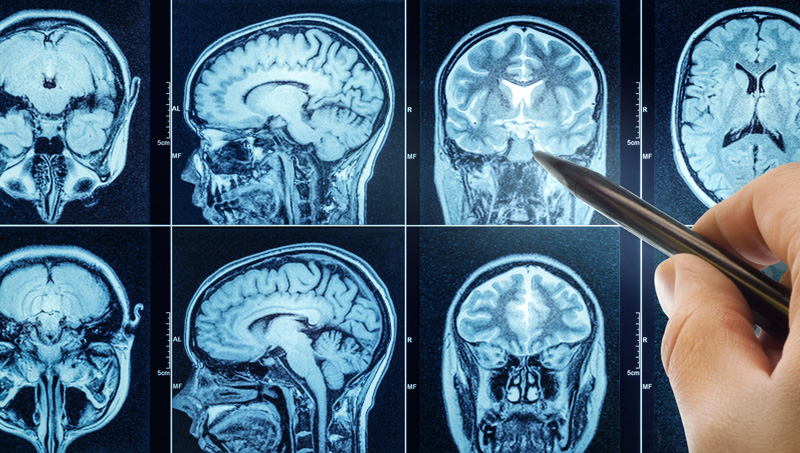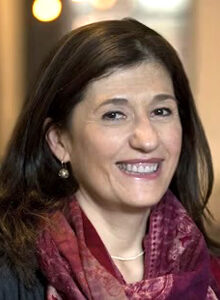Like every unique person, autistic people contribute to the richness of our experience in the world. But autistic people also face challenges that vary in severity and complexity. The Simons Foundation supports multidisciplinary research into many aspects of autism with the hope that new knowledge will reduce autistic challenges and lead to a better quality of life for autistic individuals.

Autism BrainNet is a program of the Simons Foundation that provides a bridge between the autism community and the worldwide community of scientists who are dedicated to a greater understanding of autism. Autism BrainNet has a very particular function. It promotes the post-mortem donation and distribution of brain tissue to scientists who use the resource to carry out state-of-the-art research (Amaral et al., 2018). Thinking about brain donation can be uncomfortable. It doesn’t feel the same as organ donation, which directly and often immediately changes a patient’s prognosis and quality of life. Nor can you check a box at the Department of Motor Vehicles to indicate your willingness to donate your brain alongside other organs. It’s a separate and distinct process. However, it can leave a legacy through research that impacts many more people than the single individual receiving an organ. A single brain donation can facilitate hundreds of research studies!
Why Do Scientists Need Actual Brains for Research?
There is wide consensus that autism spectrum disorder (ASD or autism) is a neurological condition. Beyond the diagnostic features of autism, individuals often have epilepsy, anxiety, intellectual disability, and sleep disorders – all presumably due to alterations of brain function. While there are many strategies for studying the human brain, such as magnetic resonance imaging (MRI), none are able to examine the brain at a cellular and molecular level. Research using post-mortem brain tissue provides one of the most direct paths to understanding the biological causes of autism and identifying potential therapeutic targets. Brain tissue cannot be replicated in other ways (e.g., by a computer model or virtual reality), which is why it’s a critically important and valuable resource. Other neurological conditions, such as Alzheimer’s Disease, have benefitted from more than a century of post-mortem brain exploration (Alzheimer, 1907). Many of the preventative measures and treatments for Alzheimer’s disease now undergoing clinical trials are direct outcomes of post-mortem brain research.
While post-mortem research on the autistic brain has lagged behind other neurological conditions, the availability of tissue for research has sparked a renaissance. For example, this summer, a new study describing gene expression in a neurodevelopmental syndrome (Dup15q) that greatly increases the risk of autism was published in The American Journal of Human Genetics (Dias et al. 2024). The authors acknowledge that the key findings are only possible through the fit of post-mortem brain donations. This study found, surprisingly, that changes in gene function affected different cell types in the brain differently. An earlier neuroanatomical study demonstrated that neurons in the amygdala, a region associated with anxiety, have a different developmental trajectory in the autistic brain (Avino et al., 2018). These types of studies, and ones that can’t even be imaged now, will increase in number as post-mortem brain tissue becomes available to researchers and will undoubtedly lead to a far better understanding of the biology of autism.
How Does Brain Donation Work?
The time to learn about and make plans for brain donation isn’t at the time of crisis – it’s an idea that needs to be considered before the end-of-life is imminent. At Autism BrainNet, we strive to minimize the stress of decision-making by clearly outlining the steps required to ensure that each donor’s decision is respected. Even if you contact Autism BrainNet to learn about the process, there is no commitment. Brain donation is entirely voluntary and is cost-free.
Here are the steps you need to take when considering brain donation with Autism BrainNet.
- Learn More: Our website provides comprehensive information about Autism BrainNet and our work to facilitate autism research through brain donation. We also share the stories of families whose loved ones became donors and why they made the decision to donate.
- Call Us: We maintain a 24/7 telephone helpline to answer families’ questions and/or arrange for a brain donation. In the case that the decision has been made to make a donation, we encourage people to call 877-333-0999 when death is near or has occurred for immediate assistance. Autism BrainNet clinical staff will work with the legal next of kin to provide and facilitate the process step-by-step. Though state laws vary, the legal next of kin is usually a health care agent (if named), spouse, adult child, parents, siblings, and then increasingly distant relatives based on local laws. In the case of minors, parents are typically recognized as the legal next of kin.
- Let Us Handle Coordination: After Autism BrainNet gets permission for a donation, we work directly with the hospital or medicolegal individuals to coordinate the donation and ensure the donation is safely transported, preserved, and stored for future use.
- Lean On Us For Support: After donation, a clinical with Autism BrainNet will follow-up with the donor family to answer questions and provide support. They will also gather additional medical, behavioral, or family history to inform future research.
To preserve the scientific value of the brain tissue, a donation should be received as soon as possible after death (24-48 hours is optimal). That’s why it is important to understand the process ahead of time. There is no cost to families working with Autism BrainNet, and brain donation does not interfere with a family’s autopsy or funeral plans.
Why Should You Think About Brain Donation?
Amidst the grief of losing a loved one, we often hear from families that working with Autism BrainNet helps keep the memory of their loved one alive and builds on the legacy they leave. They tell us that they believe that donation is a positive and a comfort at the time of a loss. Autism BrainNet accepts post-mortem brain donations from people with a diagnosis of autism, even when other diagnoses are present, from people with a genetic diagnosis associated with autism, whether or not they have a diagnosis of autism, and from neurotypical people. If you want to learn more about Autism BrainNet, please visit our website at AutismBrainnet.org.
David G. Amaral, PhD, and Marta Benedetti, PhD, are Directors at Autism BrainNet.
References:
Alzheimer’, A. (1907), ‘Uber eine eigenartige Erkrankung der Hirnrinde.’, Zeits Psychiat PsychischYGerichtlich Med., 64, 146-48.
Amaral, D. G., et al. (2018), ‘Autism BrainNet: A network of post-mortem brain banks established to facilitate autism research,’ Handb Clin Neurol, 150, 31-39.
Avino, T. A., et al. (2018), ‘Neuron numbers increase in the human amygdala from birth to adulthood, but not in autism,’ Proc Natl Acad Sci U S A, 115 (14), 3710-15.
Dias, C. et al. (2024), ‘Cell-type-specific effects of autism-associated 15q duplication syndrome in the human brain’, Am J Hum Genet, 111 (8), 1544-58.





